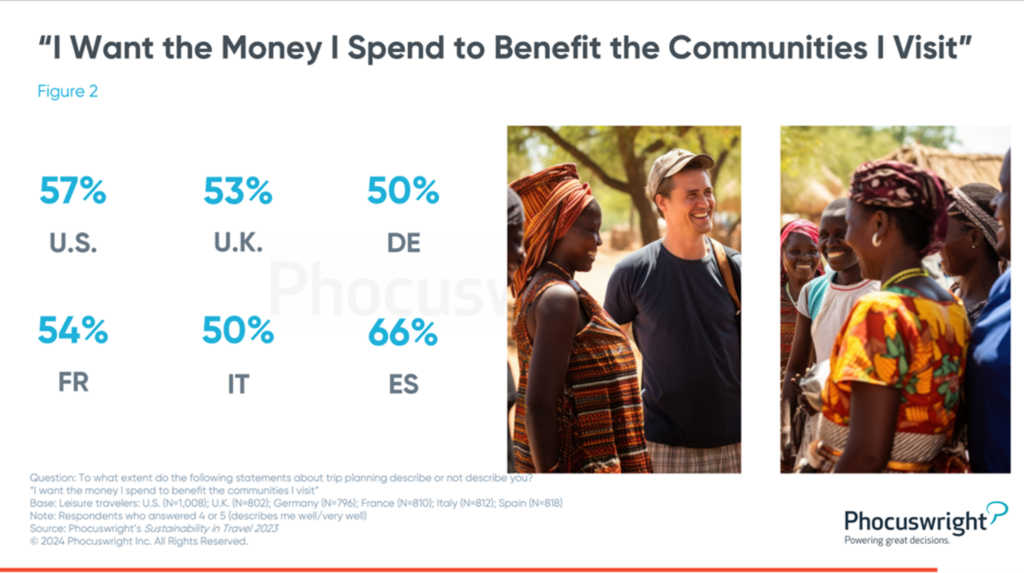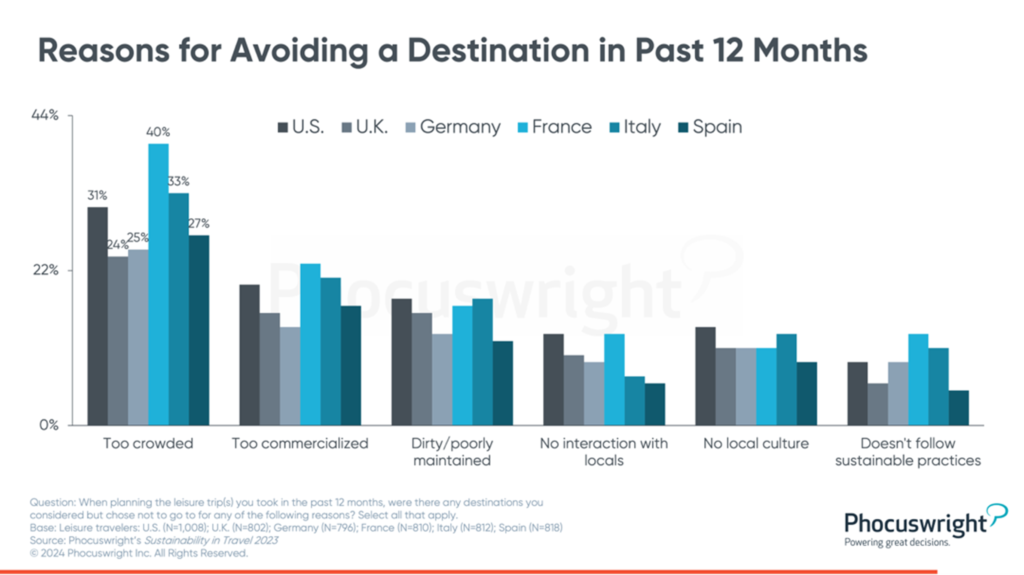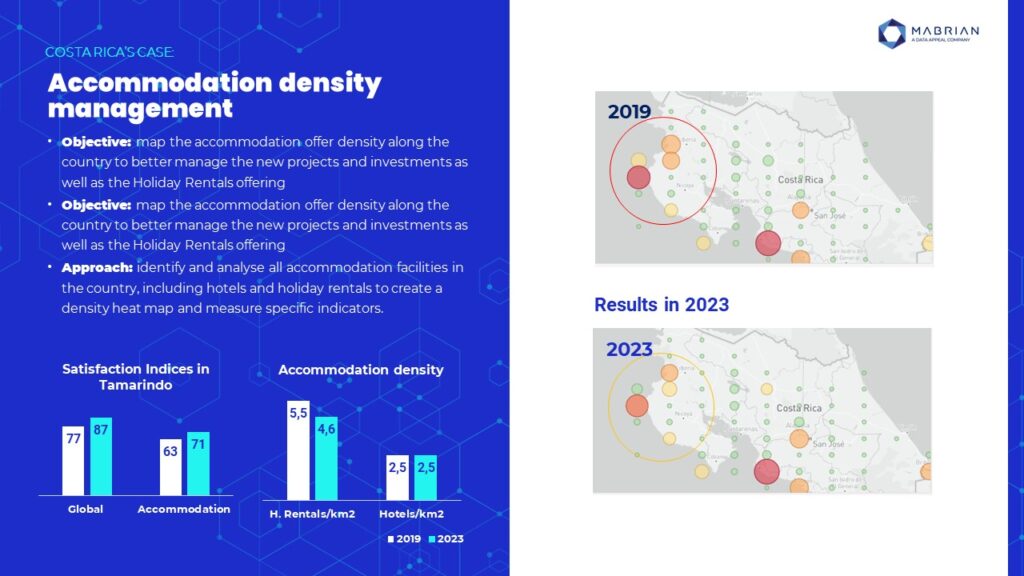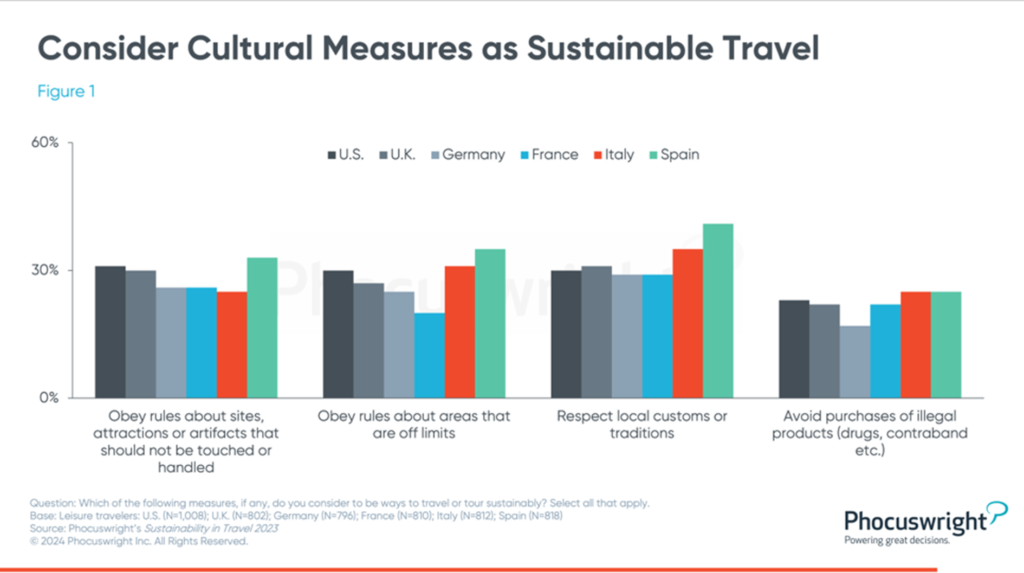
Addressing overtourism is crucial, with 61% of travellers avoiding destinations due to it in the past year; and to do so, destinations should use a holistic, data-led approach to balance local resources, community welfare, and tourism growth. This is one of the conclusions of the white paper “A Roadmap to Move Destinations Away from Overtourism”, developed by Mabrian, the global travel intelligence company, in collaboration with Phocuswright.

Released ahead of the Phocuswright Europe event in Barcelona (June 10-12), this white paper aims at including overtourism in broader discussions on sustainable destination management. It highlights the need for innovative analysis and planning using integral performance key indicators and a data-driven tools.
The report utilizes data intelligence from Mabrian and Phocuswright’s studies to explore how various dimensions of sustainability translate into useful indicators for destination planning.

Finding the balance: from measuring to policy making
The white paper offers insights, benchmarking, and performance goals for destinations to create their own tourism sustainability models, aiming to address overtourism. Additionally, it includes success stories and data insights to demonstrate the practical application of these indicators in real-world scenarios.
The seven indicators proposed interact with each other, and can be implemented to different sets of goals, depending on the specific conditions of each destination.
Distribution of Tourist Spend: Besides measuring spending per visitor and category, is vital to understand how it is distributed. A destination less affected by overtourism tends to have a more evenly spread distribution of spending across its territory, which benefits both its economy and local welfare. This was exemplified by Lanzarote’s Cabildo and Tourism Board, who tracked the distribution of spending during the 2023 Saborea Lanzarote festival and found that tickets in restaurants and other gastro experiences increased year over year, reaching 37% of the island’s total average tourism spending. Ultimately, it’s about capitalizing on travellers’ preferences, as research from Phocuswright indicates that between half and two-thirds of travellers want their spending to support the communities they visit.

Carbon Footprint – CO2 emissions: Reducing CO2 emissions is crucial for minimizing the environmental impact of travel, especially since air transportation accounts for 55% of the tourism sector’s carbon footprint (Travel Foundation Report). Analysing CO2 emissions over time per source market and visitor, as well as the ratio of travellers’ spending to emissions generated, can help destinations target segments with better spending-to-emissions ratios. For example, Tourspain implemented such strategies and, by 2023, achieved a 4.9% reduction in the carbon footprint per visitor to Spain and a 5.1% increase in tourism income per traveller.

Concentration of Tourism Offer: Density and human pressure are commonly associated with overtourism rather than sustainability, but there’s a disparity in travellers’ perception. According to Phocuswright data, while 43-61% of travellers avoided destinations in the past year due to sustainability concerns, only 13-21% see visiting less crowded destinations as sustainable. Understanding the clustering of accommodations and attractions is crucial for both traveller comfort and community welfare. Mabrian & Phocuswright analysis cites the case of Costa Rica’s Tamarindo region DMO, that utilized data intelligence to map accommodation density, resulting in a 16% decrease over five years and significant improvements in Hotel and Destination Satisfaction Indexes.
Perception of Tourism Sustainability: An effective sustainable approach to overtourism involves aligning policy-making with its impact on both locals and visitors to mitigate what Phocuswright terms as “sustainability dissonance” – the gap between the intention to travel sustainably and actual traveller choices. Targeted messaging and engagement strategies play a central role in shaping perceptions of tourism sustainability, as demonstrated by Seville’s “Smart Streets” campaign, deployed by Sevilla City Office. This initiative highlighted the city’s sustainable achievements, enhancing the experience for both locals and visitors. Consequently, Seville saw a year-on-year increase of 6 points in its Sustainability Perception Index, reaching 70 out of 100, over 7 points higher than Spain’s national average.

Besides keeping on sight policies to measure and beat seasonality, the white paper also proposes to carry out strategies to broaden motivational diversification and reduce dependency on origins, relying on a varied selection of activities, attractions and tourism products, which contributes to lower density areas and less seasonal demand, as well as developing, alternative, more evenly distributed experiences throughout the territory and the year.
As explained by Madeline List, senior analyst at Phocuswright: “A successful, consistent sustainable strategy involves formulating good practices but operationalizing them expediently.” Implementing effective measures against overtourism entails “having a transparent, honest and data-centric approach of the impact of tourism on destinations, based on a holistic model able to create a long-standing balance that benefits the businesses, locals and visitors alike while preserving the environment”, according to Carlos Cendra, Partner & Chief Marketing and Communications Officer at Mabrian.
4


Comments are closed.